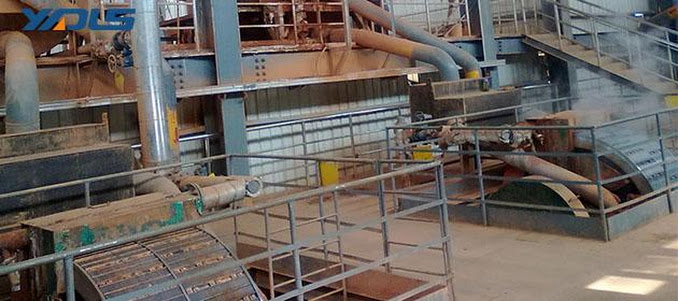Concentrates, Tailings
and Middling and Grade
Concentrates are the enriched
mineral products of ores after beneficiation to remove most of the gangue and
impurities. Concentrates are the final product in the processing plant,
sometimes called final concentrates. Concentrates can be qualified only if when
both the main components and impurities reach the national standard.
For example: K-feldspar
(potassium feldspar) for ceramics, in accordance with the general industrial
standards, K2O + Na2O content must be greater than or equal to 11%, and the
Fe2O3 content is less than 0.2%.
Tailings are the
materials left over after beneficiation to extract the useful minerals from the
uneconomic fraction (gangue) by beneficiation, also called residue, waste, slimes, mine dumps, culm
dumps, tails, refuse or slickens,
Limited by the current level of technology, it is
difficult utilize tailings, but in the future it is likely to be reused.
For example: large amounts
of tailings, commonly known as red mud
or red sludge are produced every day from aluminum factories. For the huge
quantity, tens of thousands of tons of red mud accumulation in the reservoirs with
the risk of leakage at any time, taking up a lot of land, polluting
groundwater. On October 4, 2010, a million cubic meters of red mud was leaked
from Ajkai alumina Factory in Hungary
In recent years, with the development of technology, magnetic
material and non-magnetic material are separated by high gradient magnetic separator. After separation, Fe content of 20%
of the mud can be increased more than 56% for reuse; extracted non-magnetic
substances are available to produce cement, brick, road filler material.
Middling is the middle
product in beneficiation process. Content of economic components in middling is
generally between the concentrate and tailings. Middling is usually returned to
early stage for processing in beneficiation flow, or separately treated.
Grade: refers to the
ratio of mass of the metal or useful components to the mass product, commonly
expressed as a percentage.
For example: Total Fe% of hematite (feebly magnetic)
run-of-mine is 46%, a = 46%. After high intensity magnetic separation, in concentrate the iron content increased
to 60%, β= 60%. Fe% in tailings is
reduced to 20%,θ= 20%.















